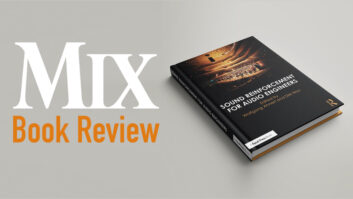
If you’re looking for a breezy summertime music-based read—something with household names, mobsters, poor life choices, big laughs and, most of all, a lifetime’s worth of insight and advice on what it takes to be a world-class record producer—then bring Ben Sidran’s new biography, The Ballad of Tommy LiPuma (Nardis Books), on your next trip to the beach.
A wildly successful producer, LiPuma’s discography has sold more than 75 million copies over the years, as he worked with names like Barbra Streisand, Diana Krall, Willie Nelson, Michael Bublé, George Benson, Paul McCartney, Randy Newman, Dr. John, Michael Franks, Miles Davis, Natalie Cole, Anita Baker, David Sanborn, Queen Latifah, Gladys Knight, Leon Russell and tons more. It’s the kind of catalog where you’ve heard his work a thousand times even if you’ve never searched it out.
An accident while playing baseball as a kid resulted in LiPuma getting a bone infection in his hip that, following two years in bed and three operations, left him with a pronounced limp. During that time, however, he took solace in his AM radio and developed a love of R&B music that over the years guided him slowly but surely to the music biz rather than the family business of cutting hair. Working his way up the ranks in record promotion and other jobs, LiPuma eventually wound up in the producer’s chair in 1965 and then never left it.
As a result, the tome is packed with insights and anecdotes that are not only fun, but also instructive. That producer’s chair? He kept it in the live room, preferring to sit in solidarity with the musicians, away from control room distractions like the phone, engineers and, most of all, the clock. Sidran writes, “Even the term ‘control room’ seemed to describe what Tommy didn’t like about the traditional production arrangement. You don’t control the music; you set up an environment in which the music and the performance just naturally arrive in the moment.” That method soon got taken up a notch when the young producer watched Burt Bacharach excitedly coach musicians during his own session; inspired, LiPuma realized part of his job was to communicate and infuse his own passion about a song into the musicians playing it.
Book Review: Get Tusked – The Inside Story of Fleetwood Mac’s Most Anticipated Album
In other sections, LiPuma shares the secrets behind Phil Spector’s legendary Wall of Sound production style, as well as a mixing lesson learned from the man himself. Sidran recounts how, after LiPuma played Spector a mix at ear-splitting levels, “Phil said, ‘Have you listened to it at a low level?’ He was the first person to tell Tommy that if you listened to a playback at a lower level, you were better able to hear the relationships between musical elements. From that day on, Tommy mixed soft.”
The insights come in all forms throughout the book. Speaking about his career-long working relationship with legendary engineer Al Schmitt, LiPuma shared, “I often think being a record producer is like being a film director. The songs are like the script; you have to make sure the songs are great, like the script has to be great. You cast musicians like you cast the actors—you can get a great musician, but if he’s wrong for the part, it just won’t work. And finally, whereas in a film it’s the cinematographer who captures the image, in recording, it’s the engineer who’s responsible for the sound. And the sound of the record is very important to its success.”
Time and again in the book, LiPuma discusses what it means to be a producer. Sometimes it’s being able to recognize a rough song’s potential (“Anybody can hear a hit record when it’s finished”); other times, it means racing through airports with armloads of recordings only to miss a plane; and still other times, it’s taking apart a disastrous take to spot the one musical gold nugget that goes on to become a track’s signature hook. That’s what happened with his production of the title track on George Benson’s Breezin’—an album that went on to sell 8 million copies.
While there’s plenty to learn from the book, it’s important to point out that it’s a fast-moving, intriguing read packed with stories—you get tale after tale recounting the shady early days of the record business, the sometimes rough-and-tumble politics behind the scenes, lost nights of drug-fueled revelry, brushes with the mob and more. All of this is recounted by Sidran in a friendly yet knowing style that reads like Jimmy Breslin if the legendary journalist had an encyclopedic knowledge of recording. As happens, Sidran knows his own way around a studio, having released more than 35 solo albums and produced artists like Diana Ross and Van Morrison. That intimate knowledge of the recording process brings a welcome depth and clarity that books about producers don’t always possess. By turns inspiring and amusing, The Ballad of Tommy LiPuma weaves a fascinating yarn, recounting a lost era of music making even as it shares timeless lessons of record production.







